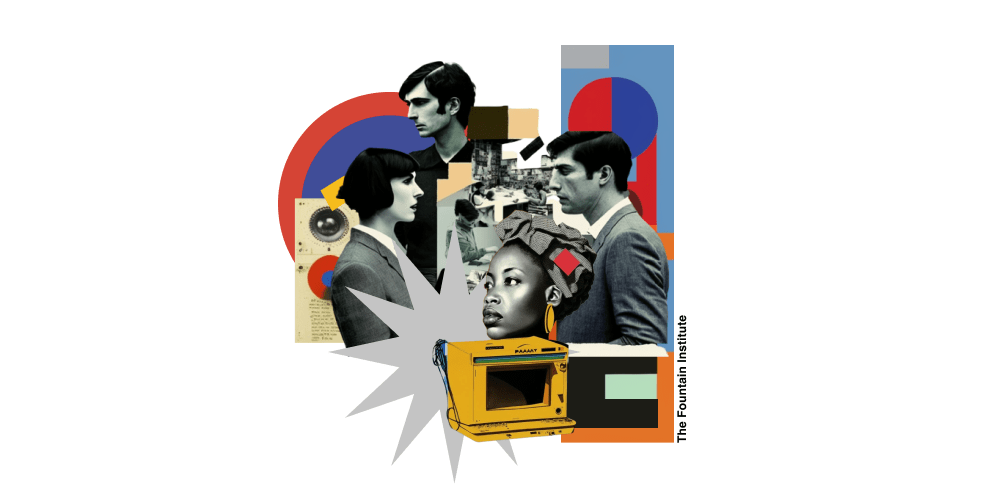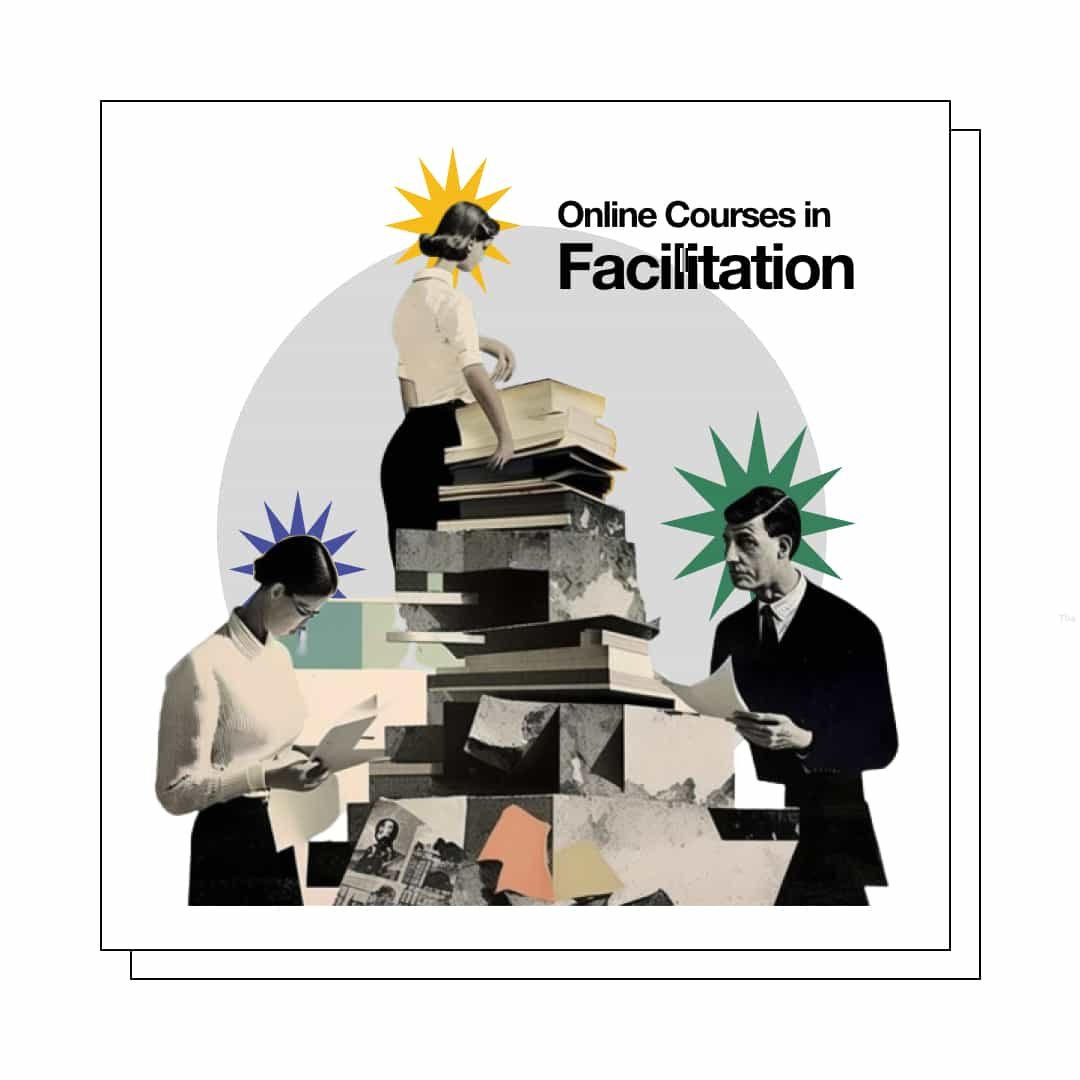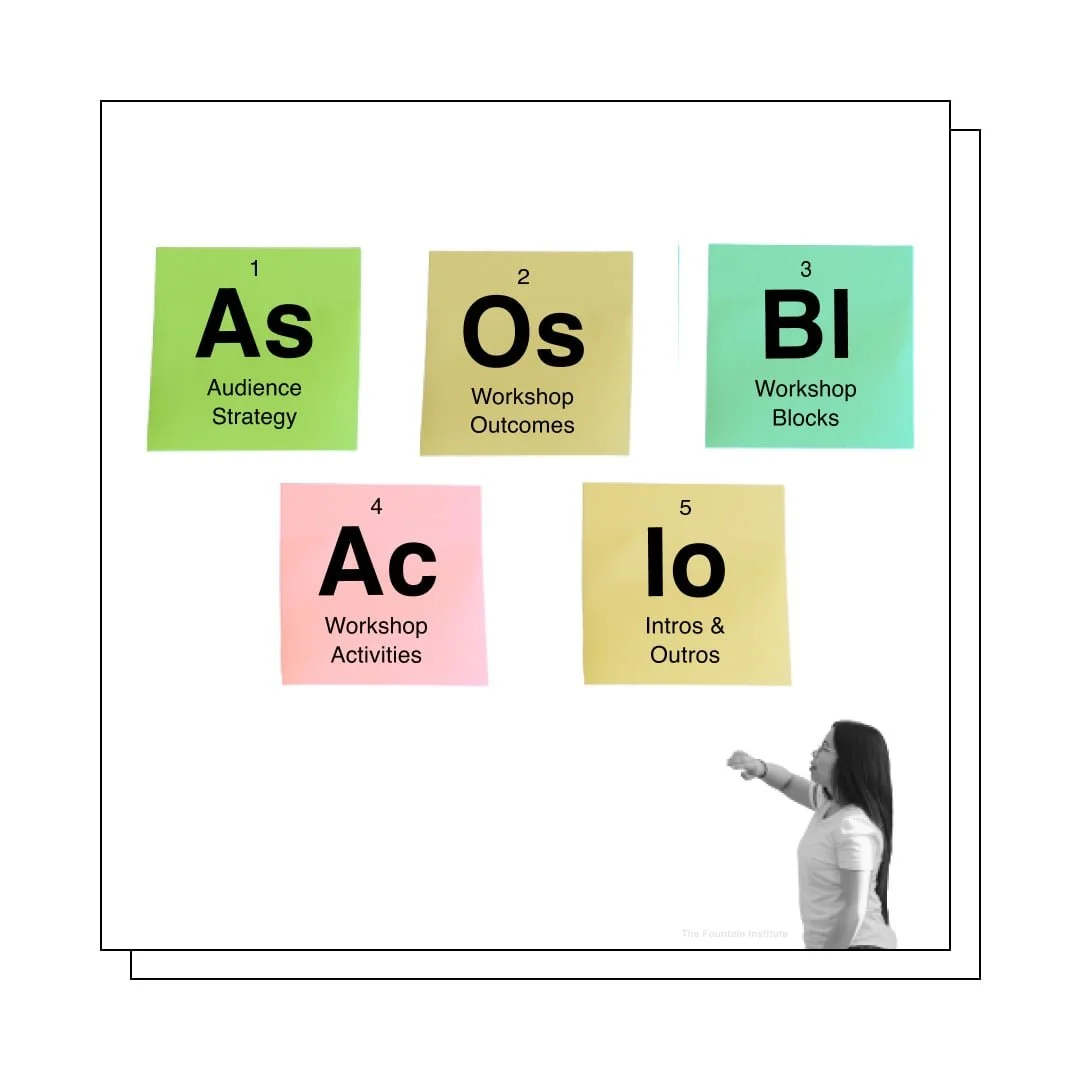What Is Facilitation? A Definition and Overview
A thorough introduction for designers (and anyone else) wanting to understand what facilitation is and how it’s used.
Reading time: 20 minutes
You’ve probably heard of facilitation (especially if you’re working in design). Maybe you’ve even practiced facilitation in one form or another.
But would you be able to define it if somebody asked? Are you confident enough in your knowledge of facilitation that you know exactly when and how to use it?
If you’re somewhat hazy on what facilitation actually means — and what it looks like in practice — then you’ve landed on the right post. Read this article if:
You want a clear definition of facilitation
You want a deeper understanding of what facilitation actually means (and the value it brings)
You want examples of different contexts where facilitation is used
Ok, let’s get to it!
What Is Facilitation? A Definition
The dictionary definition of facilitation is “the process of making something possible or easier.”
In a work or business context, this definition expands to “the act of helping other people to deal with a process or reach an agreement or solution without getting directly involved in the process, discussion, etc. yourself.”
In practical terms, facilitation is a process, a role, and a skill set. It’s about guiding and supporting a group of people so they are able to collaborate better and reach solutions, decisions, and outcomes faster and more effectively.
Watch this video to learn more about what facilitation is:
What Does Facilitation Look Like in Practice?
Facilitation can happen in all kinds of group settings — think meetings, workshops, group projects, and more. Essentially, any task or situation which requires several people to get together and achieve something collaboratively can benefit from facilitation.
Here’s what facilitation looks like in action:
Careful planning and preparation — a facilitator will usually create an outline or program which, by design, encourages equal participation from all members of the group and keeps the session focused on a specific goal or outcome.
Exercises and activities — in the case of planned workshops and meetings, the facilitator will run certain exercises which encourage discussion and ideation. These range from icebreakers and energizers to get the group warmed up, right through to games, roleplay, sketching exercises, and more. Many of the workshop activities that facilitators used are actually design methods, so designers practicing facilitation will be in familiar territory.
Guiding the conversation — a crucial part of facilitation is guiding discussions in the right direction (i.e. towards the goal or solution) and keeping the group on-topic. This might involve asking thoughtful questions or stepping in to ‘park’ topics which are important but not relevant for the challenge at hand. A facilitator will also take steps to amplify quieter voices and ensure that everybody is heard.
Decision-making and goal-setting — facilitation is about facilitating progress towards a specific outcome. As such, it involves guiding the group towards a final decision and helping to establish action points beyond the meeting, workshop, or collaboration setting.
Facilitation skills — facilitation (and all the strategies and techniques it involves) relies on certain skills. In practice, facilitation looks like: asking the right questions at the right time, active listening, suspending your judgment and maintaining impartiality, and striking the balance between adaptability and focus on the end goal.
We’re starting to see what facilitation is, but we’re missing the value. What’s the point of facilitation? Why do we need it?
Let’s take a look.
What Is the Value of Facilitation?
Perhaps the best way to highlight the value of facilitation is to consider what happens without it.
Typically, whenever a group of people get together, there are those who are louder, more confident (or just more vocal), and who generally tend to dominate the conversation. Then there are those who also have brilliant ideas and valuable perspectives…but we don’t get to hear them because they’re drowned out by those bigger, louder voices.
Group dynamics aside, there’s also the issue of structure and ‘getting to the point’. How many times have you left a meeting thinking What was the point of that? or There’s an hour I’ll never get back.
Often, calling a meeting feels productive but it doesn’t actually yield any results.
Without facilitation, collaboration can fall victim to:
Uneven contribution — the louder voices dominate while other valuable perspectives and ideas go unheard.
A lack of structure — people get sidetracked, discussions go off in unproductive directions, and the original point is lost.
Too much talk and not enough action — the focus is on talking and being heard rather than producing ideas and outcomes. The contents of the discussion are rarely translated into action points.
A lack of conclusion — with no one steering the group towards a final decision, solution, or next steps, the initial challenge goes unresolved and progress is slow (or non-existent).
Facilitation helps you avoid these common collaboration pitfalls. The key benefits of facilitation are:
Full and even contribution across the group — facilitators are skilled in encouraging everyone to participate, and providing different channels for participation (not always verbal). This makes it possible to harness a diversity of perspectives and ideas, which inevitably leads to better outcomes.
Creating a safe space to fail — part of the facilitator’s role is to foster psychological safety among the group. This boosts engagement and encourages risk taking, empowering people to share their ideas and be creative. And this is backed by research; a Google study found that psychological safety is key to effective teamwork.
Commitment and buy-in from the whole group — when you empower everybody to have a say, you foster a sense of responsibility and ownership across the group. If everyone feels involved in the final decision, they will also feel committed to making it happen.
Structure and direction — facilitation keeps the group on-track and on-topic, ensuring progress towards a specific end goal.
Activities and techniques designed to produce outcomes — whether it’s running specific exercises or simply asking the right questions, facilitation is designed to unlock creativity and lead the group towards ideas, decisions, outcomes, or next steps.
Ultimately, facilitation holds the key to better collaboration. Better collaboration boosts engagement, fosters connection, saves time, and accelerates progress. That’s of huge value for everyone involved.
Ok, so we know facilitation is extremely valuable. But when, where, and how is it used? Keep reading!
How and When Is Facilitation Used? Examples of Facilitation in Different Contexts
Facilitation can be valuable in a range of settings and scenarios — it’s not reserved for big fancy workshops or major strategic initiatives. In fact, you can work facilitation into (almost) any collaborative setting and watch the magic unfold.
Here are some examples of where and how facilitation is used.
In meetings
Facilitation can help to foster collaboration and bring structure to everyday meetings. It may be a simple case of bringing in some facilitation techniques and behaviors — for example, clearly outlining the purpose of the meeting upfront, asking thoughtful questions to elicit ideas and participation, and closing the meeting with a summary of action points and next steps.
In workshops
Workshops are, by design, more action-focused than meetings — but they’re only successful if they’re facilitated well. Workshop facilitation involves carefully planning an outline or program, running exercises to achieve specific outcomes, time-boxing and timekeeping, and ultimately guiding the group toward a final decision or action point(s).
Learn more in this guide: 5 Key Elements to Designing Workshops
In educational settings
Facilitation can completely transform the learning experience. Rather than simply lecturing, telling, and instructing, facilitation fosters discussion around the educational content and inspires collaborative learning (where people learn with and from each other, benefiting from the group’s collective knowledge, skills, and ideas). This makes for a more interactive, more engaging, and generally more effective learning experience.
In leadership
Facilitation doesn’t always have to happen within a specific session with everybody in the same room. It can be ongoing — a set of skills, behaviors, and approaches which shape your leadership style. Facilitative leaders practice active listening, encourage collaborative decision-making, facilitate alignment among different team members/stakeholders, and create an environment where people can reach their full potential.
In casual, impromptu conversations
As with facilitative leadership, you can take on the role of facilitator in impromptu settings — it doesn’t always require a designated space or agenda. Imagine, for example, that two colleagues come over to your desk to discuss a project you’re all working on. You might use your facilitation skills to guide the conversation towards a productive outcome or to mediate conflict.
In remote collaboration
If ever there’s been a need for facilitation, it’s in remote settings. It’s even easier in virtual meetings for people to slip under the radar and disengage as the dominant voices take over — or for the conversation to go completely off-track as connections are lost and people lose sight of whose turn it is to speak. Facilitation is a real game-changer for these scenarios. And, with remote work set to rise in 2023, facilitation will have an increasingly important role to play.
As you can see, facilitation isn’t just a process you follow within a meeting or workshop. It’s a whole set of skills and behaviors — a mindset, even — which oils the wheels of collaboration and propels the group towards actionable solutions.
Should Designers Learn Facilitation?
As a designer, you might have already dabbled in leading workshops — or unknowingly taken on the role of facilitator in other collaborative settings. What you perhaps weren’t aware of (until now) is that facilitation is a whole additional skill set in itself; one well worth learning and bringing to your day-to-day work.
Some people learn facilitation and make a full-time career out of it. But, more often, facilitators are right among us. They’re not facilitators by name, but they do act as facilitation practitioners — actively developing their facilitation skills and using facilitation to foster collaboration around them.
As a designer, learning facilitation skills will not only make you a better leader and collaborator. It can also enrich your entire practice and process.
Writing about how facilitation is the “secret sauce” of great designers, Jeremy Bird explains:
“Design is a team sport, and while everyone wants the same thing, there are usually dozens of different ideas about how to achieve results. Success, then, depends on creating a shared understanding of all those ideas and then somehow choosing a direction without hours and days of meaningless debate.”
A shared understanding…team alignment…collaborative and efficient decision-making…sounds like a good case for facilitation!
When you master the art of facilitation, you set yourself up as a confident design leader. Whether you use those skills to energize your team and improve collaboration, or to pave the way for a senior and/or strategic role, facilitation adds huge value — to both your day-to-day design practice and your career progression.
How to learn facilitation
If you’re serious about becoming a skilled facilitator, you can start training your facilitation muscles right away. Next time you’re in an unfacilitated collaborative setting, think about which facilitation skills and behaviors you might bring in to improve synergy and alignment within the group. Ask yourself:
Is everybody aware of the common goal?
Are there voices which aren’t being heard?
Does the conversation need steering back on track?
Are we leaving this meeting/workshop/conversation with a clear plan of action?
Once you start to think like a facilitator, you’ll notice more and more opportunities to take on that role.
Of course, that’s just the beginning. As we’ve established, facilitation is a unique combination of skills, techniques, and behaviors. Mastering facilitation — and being able to expertly apply it in different scenarios — requires proper training.
We’ve rounded up the best facilitation training courses in this guide, and you’ll find lots of useful links in the Facilitation Learning Resources section (right at the end of this post).
Defining Facilitation: The Takeaway
By definition, facilitation is the process of making something easier. In practice, it’s about using certain skills and techniques to facilitate collaboration — guiding a group of people to reach an end goal or solution.
You can think of facilitation as the antidote to unstructured discussions. It cuts through the noise, fosters even contribution and participation, and helps get everybody aligned. The value of facilitation is huge; it’s the key to effective collaboration, which itself is the key to productivity and progress. And that’s what we all want, right?
Learning Resources for Facilitation
Learn about what makes a great facilitator and discover 3 actionable strategies to improve your facilitation skills in this post by Hannah Baker: How To Build Your Facilitation Skills (and Why You Should)
Watch this free video masterclass on How to Lead with Facilitation, led by Hannah Baker of The Fountain Institute
Read how visual thinking strategies (VTS) can help with successful facilitation in Visual Thinking Strategies: Facilitate with Art by Hannah Baker
Learn more about the benefits of better collaboration from Bryan Kitch, writing for the Mural blog
Read about The Facilitation Mindset over on Competendo — The Digital Toolbox
Learn more about how to lead with facilitation in The Art of Facilitative Leadership: Maximizing Others’ Contributions by Jeffrey Cuffaude for The Systems Thinker
Try a free 7-day email short course to see how you enjoy facilitation
Learn how to design and run successful workshops in this free masterclass (includes useful resources)
For advanced, hands-on workshop facilitation training, take this 22-day course by The Fountain Institute
How has facilitation helped you in your job?
Share your experience in the comments!








